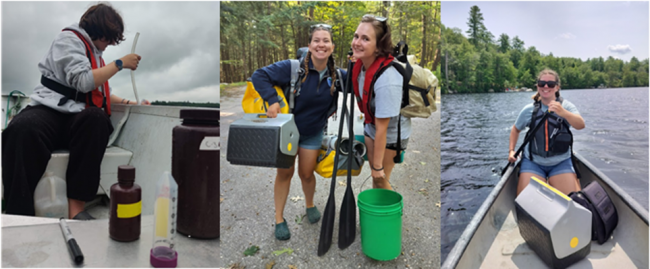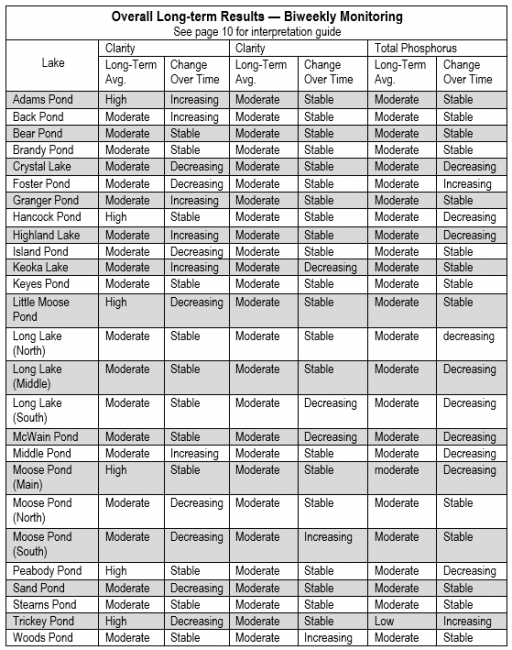The summer of 2023 was wet in the Lakes Region. In fact, according to the National Weather Service, it was the second wettest summer on record, with August 2023 being the wettest August on record. Our summer water monitoring team, Annie O’Connor and Rachel Harper, worked through unpleasant weather for the majority of the summer and were instrumental in LEA’s efforts to collect the large quantity of data used to assess overall water quality of lakes and ponds in LEA’s service area.
This summer, heavy rains and flooding brought influxes sediment and debris into area streams and lakes via runoff. Unsurprisingly, this year throughout the service area, clarity readings were generally lower, total phosphorus concentrations were generally higher, and chlorophyll concentrations were typical when compared with last year’s data. However lower clarity readings and higher total phosphorus concentrations this year don’t necessarily indicate lessening water quality overall. For example, even though water clarity was lower, on average, this year, compared to last year, it was generally still within the same water quality range, based on LEA’s Water Quality Index, page 10, as the long-term average for most service area lakes. This is true for total phosphorus and chlorophyll concentrations too. Nevertheless, water testing results for 2023 show a great year for water quality in the Lakes Region.
Thanks to those who facilitate our work by providing lake access and/or boat access to LEA staff!


